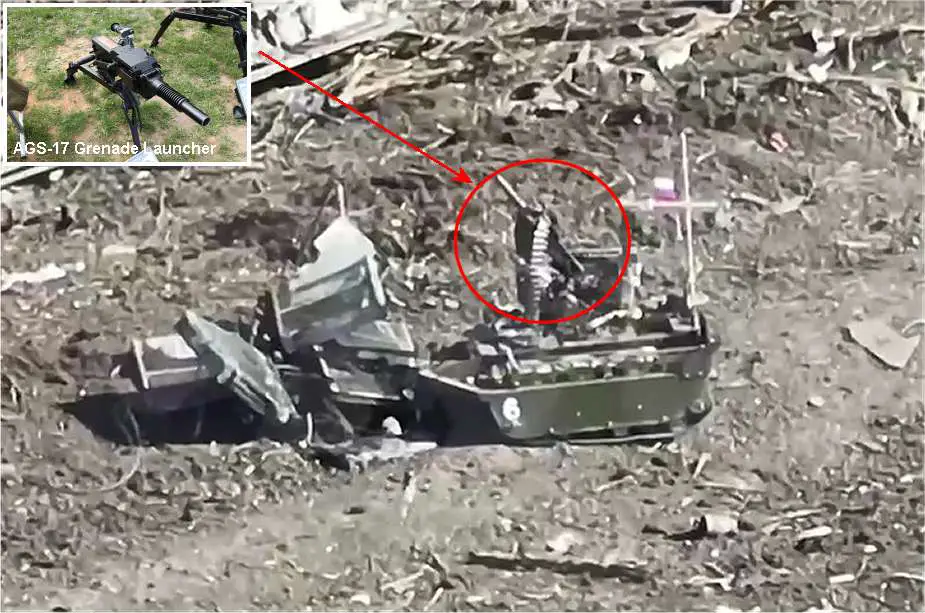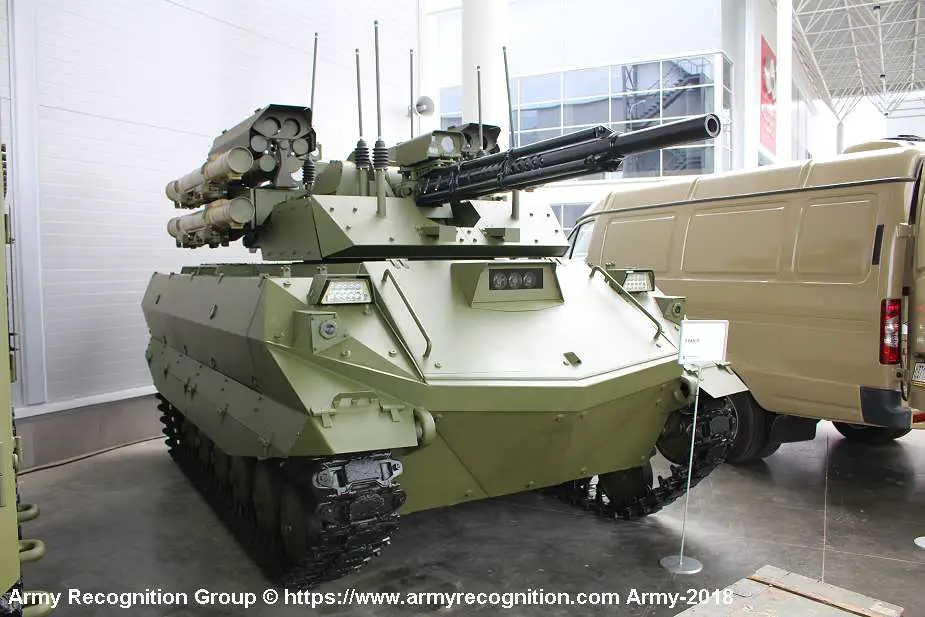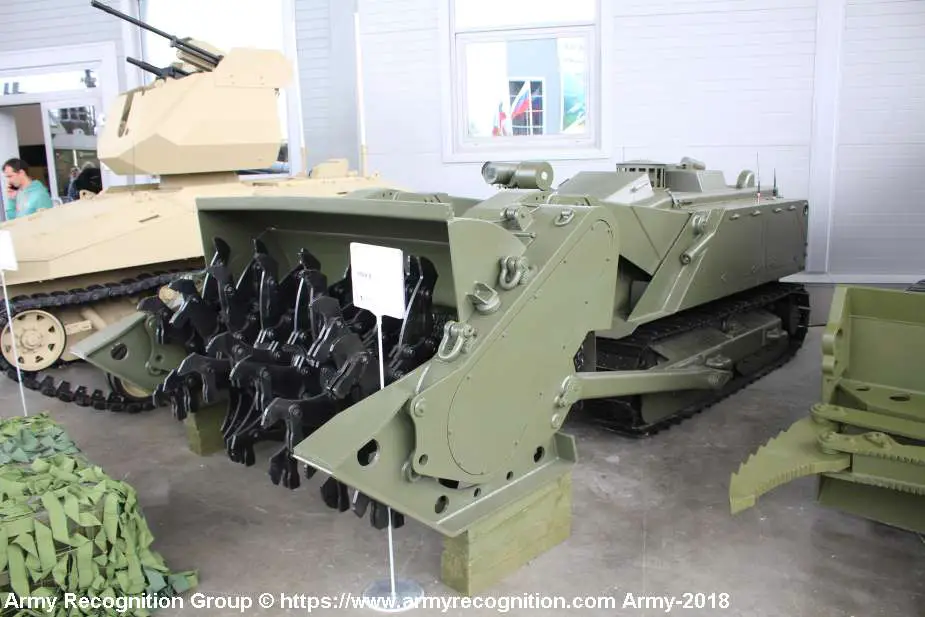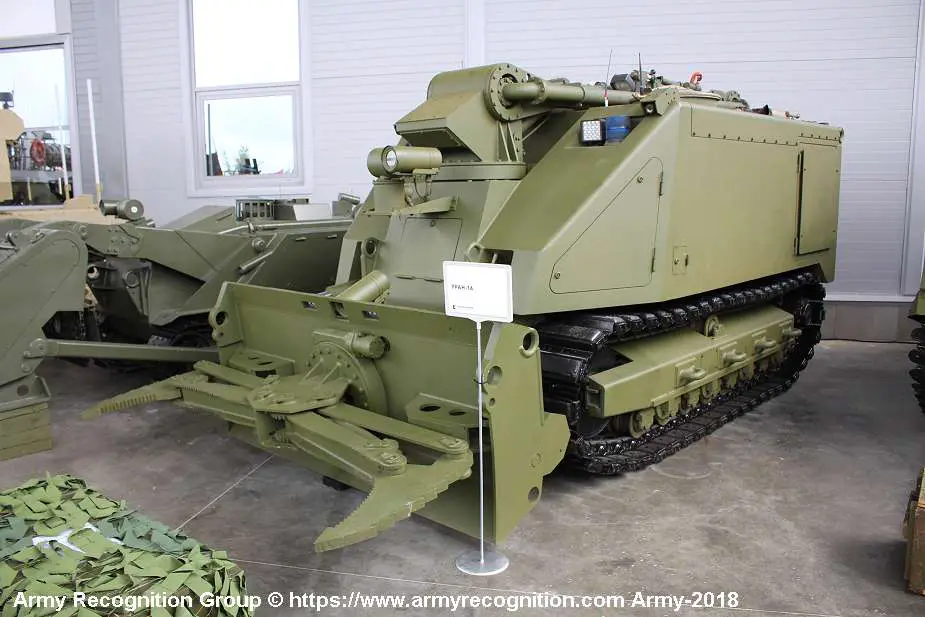Russia's Increasing Use of Unmanned Ground Vehicles in Ukraine Conflict
In a notable shift in battlefield tactics, Russian forces are intensifying the use of unmanned ground vehicles (UGVs) in the ongoing Ukrainian conflict in Donetsk Oblast, signaling a significant technological and tactical evolution. The Institute for the Study of War reported on March 30, 2024, recent activities highlighting the deployment of these advanced systems in the fiercely contested regions of southeastern Berdychi, northwest of Avdiivka, and along the Bakhmut direction, marking a pivotal moment in the conduct of hostilities in Eastern Ukraine.
Follow Army Recognition on Google News at this link

Russian UGV Unmanned Ground Vehicle armed with AGS-17 30mm automatic grenade launcher. (Picture source Video Footage Social Network)
Russian and Ukrainian sources have released footage from March 29 and 30, 2024, showcasing the Ukrainian military's engagements with Russian UGVs. These unmanned vehicles, some equipped with the formidable AGS-17 grenade launcher systems capable of unleashing a devastating barrage of 50 to 400 grenades per minute, underscore the growing importance of robotic systems in modern warfare. Such capabilities offer a glimpse into the future of combat operations, where unmanned systems could play increasingly central roles.
Additional footage disseminated by Russian sources depicted various small wheeled and tracked drones operating across unspecified locations. Samuel Bendett, an expert with the Center for Naval Analyses (CNA), has assessed these UGVs to be multifunctional, engaging in intelligence, surveillance, and reconnaissance (ISR) operations, logistical support, personnel evacuations, and even direct combat roles. This diversified use of unmanned systems highlights their strategic value in enhancing operational flexibility and reducing the risk to human life on the battlefield.
In the dynamic landscape of military technology, Russia's advancements in unmanned ground vehicles (UGVs) underscore a strategic pivot towards integrating state-of-the-art technologies into its defense mechanisms. The development and deployment of these UGVs signify a concerted effort to enhance operational effectiveness and safeguard personnel.
The Nerekhta UGV represents a smaller, versatile platform tested in Syria, showcasing its capabilities in fire support, reconnaissance, and as a logistical support vehicle. This AI-enabled system points towards Russia's experimentation with autonomous capabilities in real combat scenarios, providing valuable insights into the application of robotics on the battlefield.

Russian URAN-9 combat UGV Unmanned Ground Vehicle armed with 30mm automatic cannon and anti-tank guided missile. (Picture source Army Recognition Group)
Another significant development is the Uran-9, unveiled at the Army-2016 International Military-Technical Forum by JSC 766 UPTK. This multipurpose combat vehicle is designed for remote reconnaissance and fire support, especially in urban warfare scenarios. Equipped with an array of sensors and weapons, the Uran-9 aims to enhance infantry squad effectiveness while offering maximum protection, featuring armaments such as anti-tank guided missiles, an automatic cannon, and a machine gun.
The Marker robotic vehicle further exemplifies Russia's push towards advanced autonomous systems. Developed by Androidnaya Tekhnika under the commission of the Russian Advanced Research Foundation, the Marker offers sophisticated autonomous driving and AI-based object recognition capabilities, geared towards reconnaissance and the neutralization of enemy targets. Its development signifies a move towards multifunctional robotic platforms adaptable to various military roles.
In addition to combat roles, Russia has also focused on UGVs for support and safety operations, such as the Uran-6 and Uran-14. The Uran-6 specializes in demining, providing a safer alternative to manual demining methods and underscoring the use of robotics for hazardous tasks. Meanwhile, the Uran-14 is dedicated to firefighting in combat zones, capable of operating in high-risk environments to manage fires resulting from military actions or accidents. These vehicles illustrate the multifaceted approach of the Russian military to leverage unmanned systems not just for direct combat but also for critical support roles that contribute to operational safety and resilience.
The incorporation of UGVs into combat operations by Russian forces in Ukraine is not just a testament to the evolving nature of warfare but also a clarion call for the United States and NATO allies to closely monitor these developments. Understanding the deployment and effectiveness of such technologies in current conflicts is imperative for developing strategies and capabilities that will define the future of military engagements. The battlefield in Ukraine is rapidly becoming a testing ground for next-generation warfare technologies, offering critical insights into the characteristics of future warfare.
As the conflict in Ukraine continues, the implications of these technological advancements extend beyond the immediate tactical advantages. They pose complex challenges and opportunities for military strategists and defense technologists worldwide. The international defense community is urged to study these evolving dynamics closely to anticipate future trends in warfare and to prepare for a landscape increasingly dominated by unmanned and autonomous systems.

The Uran-6 is a Russian unmanned ground vehicle designed for mine clearance and demining operations. (Picture source Army Recognition Group)

The Uran-14 is a Russian unmanned ground vehicle specialized for firefighting tasks. (Picture source Army Recognition Group)
News Russia Ukraine War























